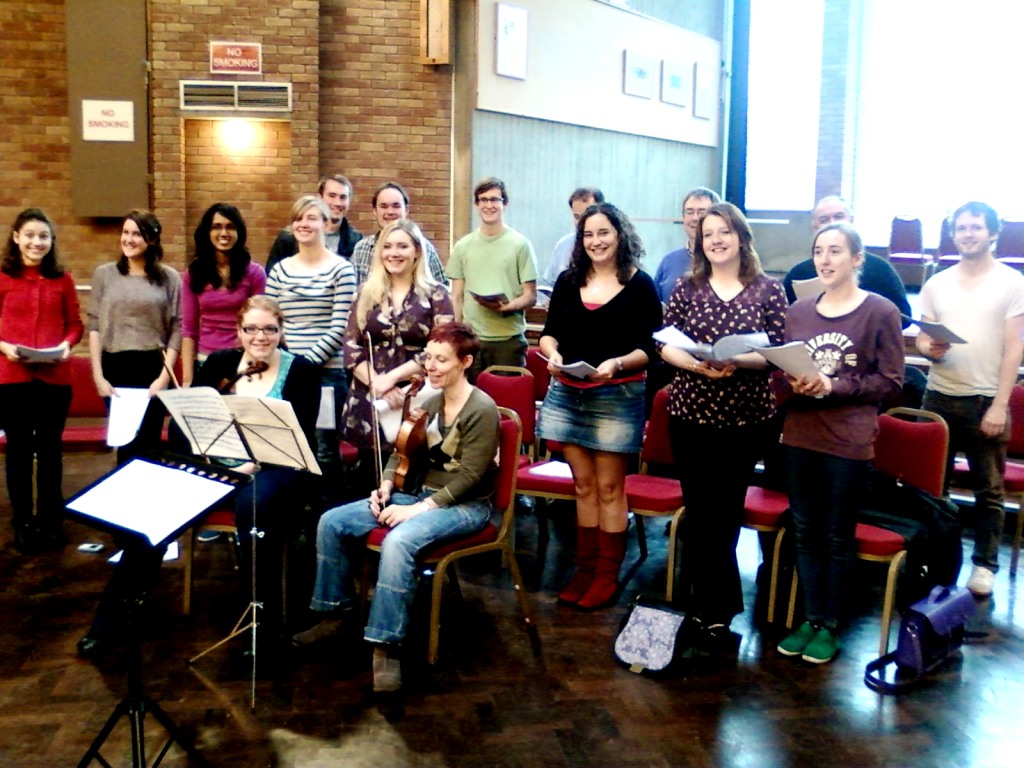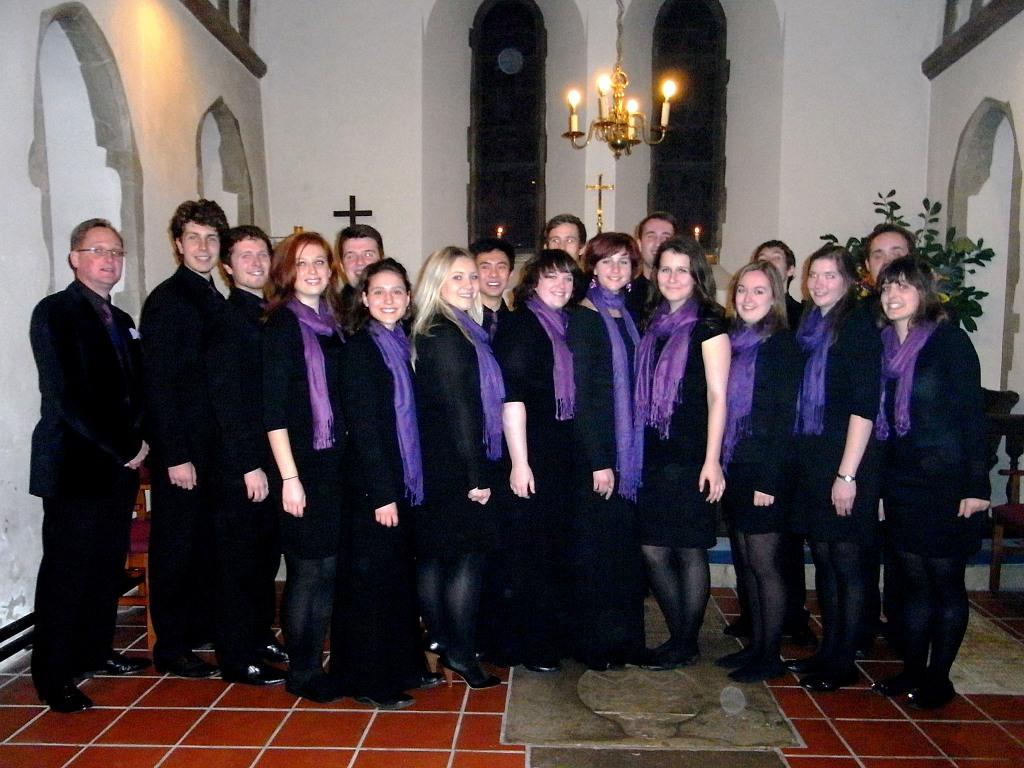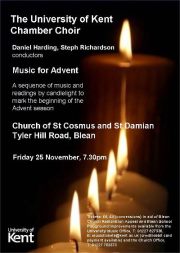Conducting, for me, is a physical experience with something akin to playing the piano – if I can’t feel the music under my fingers as we’re working, either the Choir hasn’t quite learned the music yet, or I haven’t. There’s an almost tangible sense of playing the lines, pushing the chords through the air and grasping the fabric of the music to move the textural ebb and flow and to articulate the dynamic contrasts.
Last night was the first time that this has started to emerge, particularly in the challenging Italian pieces.As the Choir grows in confidence, it becomes more responsive to the emotional rise and fall of the music, and more flexible in its pacing. Aspects of this began to emerge as we rehearsed late into the night; filling the car with fuel on the way home, I stood on the garage forecourt in the chill night air and discovered it was after ten o’clock.

Monteverdi: how Russian ?
In a bid to get a more positive reading of the two challenging pieces in the programme, we changed our approach to the two madrigals dramatically. Rather than going for a ‘tip-toe’ approach to singing, influenced perhaps by the historically-informed practices of some other singing that mistakes authenticity for singing with a small sound, that meant our pieces lacked confidence and commitment, we approached them as though they were Russian Orthodox pieces; the Monteverdi especially, we thought of as something from the Rachmaninov Vespers, with its deep tonic pedal notes and wide choral textures.
The difference was immediate: the sound was confident, the voices entered with more commitment, and sang more positively throughout the weaving textures.There was a more full-blooded sound, revelling in the evocative word-painting; the trick now will be to make sure we don’t indulge in it too much to the extent where we forget all the dynamic contrasts!
We worked as much without the piano as possible, and there is a developing sense that the pieces are starting to lift off the page; yes, there were a few moments where we turned an harmonic corner into a chord more alarmingly dissonant than a composer might have intended, but we’re starting to find our feet; the more sustained closing passage at the end of the Monteverdi in particular had a lovely sound, and very fine intonation indeed.
Barnum’s Dawn is proving to be something of a showcase for the Choir, as we develop the dynamic range and really bring out the final ‘sunlit’ section with the eight-note aleatoric cluster in the upper voices.The Choir, I think, are aware of this as well: there’s a real sense of accomplishment when we finished the piece, a genuine sense that we’re creating something remarkable, that sees them smiling and nodding afterwards. It’s a shame, in a way, that the piece is the second item in the programme: the Choir’s signal performance, perhaps the nigh point of the concert, will be right at the start. But you can’t move a piece called ‘Dawn’ to the end of a programme of music exploring the events of a single day, can you…



 With the Advent antiphons having worked so well in the concert last term, the February programme will open with a piece of plainchant for Matins and finish with one for Compline. Rehearsals resumed last night with the first of these, which will lead into the unfurling, evocative colours of Barnum’s Dawn; the latter piece is really beginning to find its feet, and the aleatoric concluding section with the sopranos and altos each dwelling on a single, separate note evoking the hue of sunrise, is developing nicely. The plainchant takes some getting used to – reading off four staves rather than the latter tradition of five and working out where the Latin inflection leads certainly focuses the mind…
With the Advent antiphons having worked so well in the concert last term, the February programme will open with a piece of plainchant for Matins and finish with one for Compline. Rehearsals resumed last night with the first of these, which will lead into the unfurling, evocative colours of Barnum’s Dawn; the latter piece is really beginning to find its feet, and the aleatoric concluding section with the sopranos and altos each dwelling on a single, separate note evoking the hue of sunrise, is developing nicely. The plainchant takes some getting used to – reading off four staves rather than the latter tradition of five and working out where the Latin inflection leads certainly focuses the mind…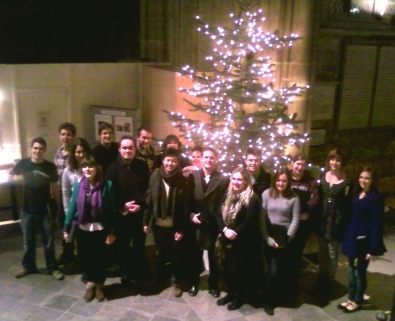
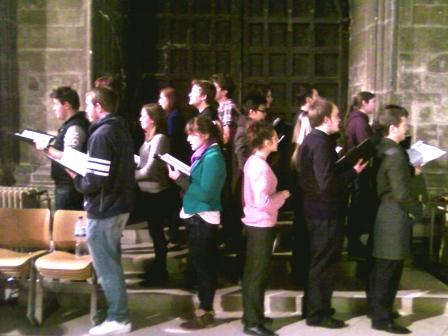
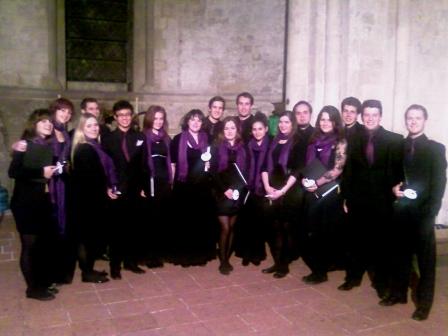
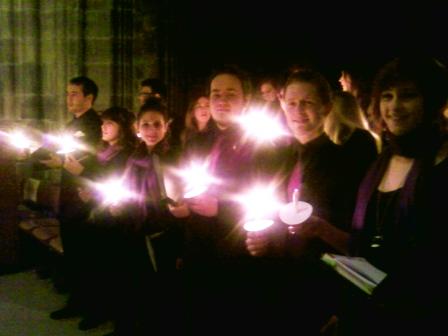
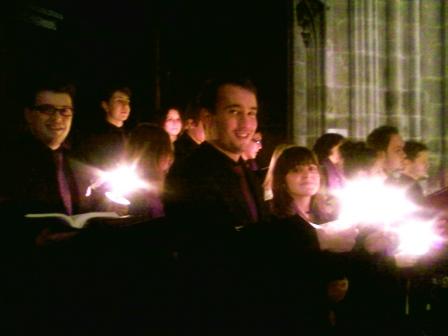

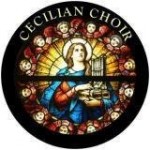 The Cecilian Choir has once again blossomed this year, and in recent rehearsals has been working on being the Chorus of Cold People in the ‘Frost Scene’ from Purcell’s King Arthur. As is customary, the Choir is formed from members of the University community – staff, students and alumni – as a sister-choir to the Chamber Choir, as part of Kent’s flourishing musical life.
The Cecilian Choir has once again blossomed this year, and in recent rehearsals has been working on being the Chorus of Cold People in the ‘Frost Scene’ from Purcell’s King Arthur. As is customary, the Choir is formed from members of the University community – staff, students and alumni – as a sister-choir to the Chamber Choir, as part of Kent’s flourishing musical life.